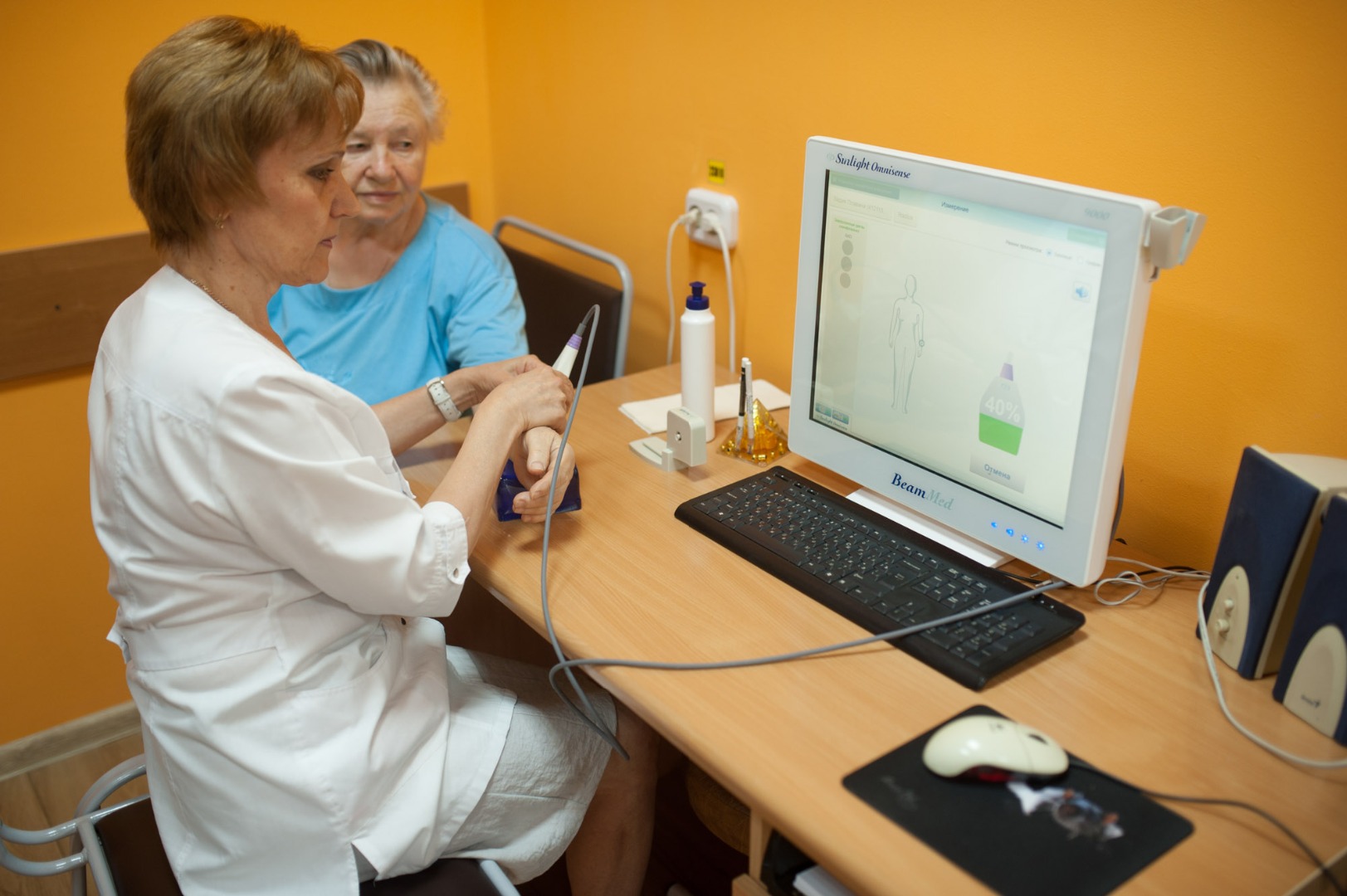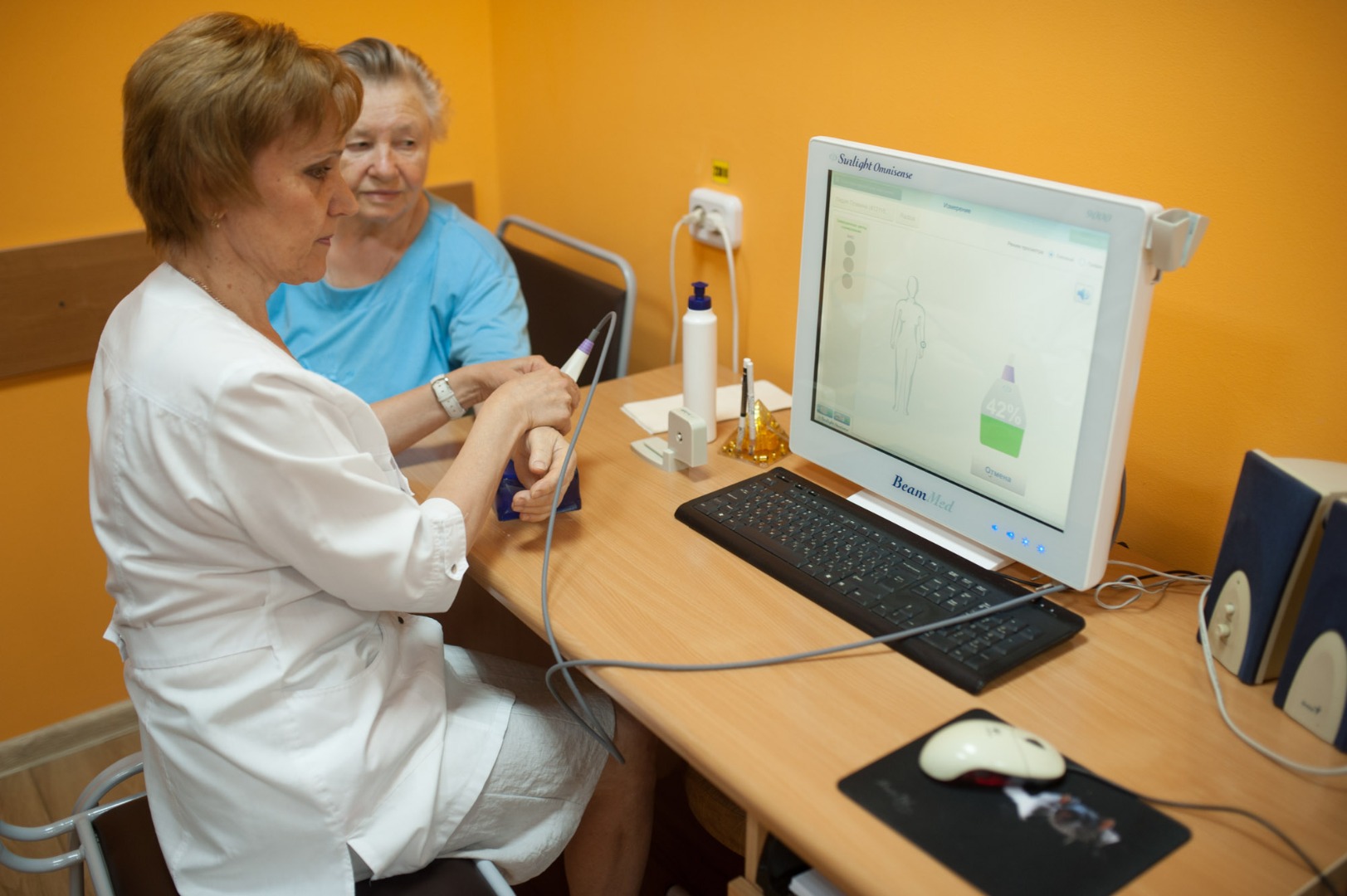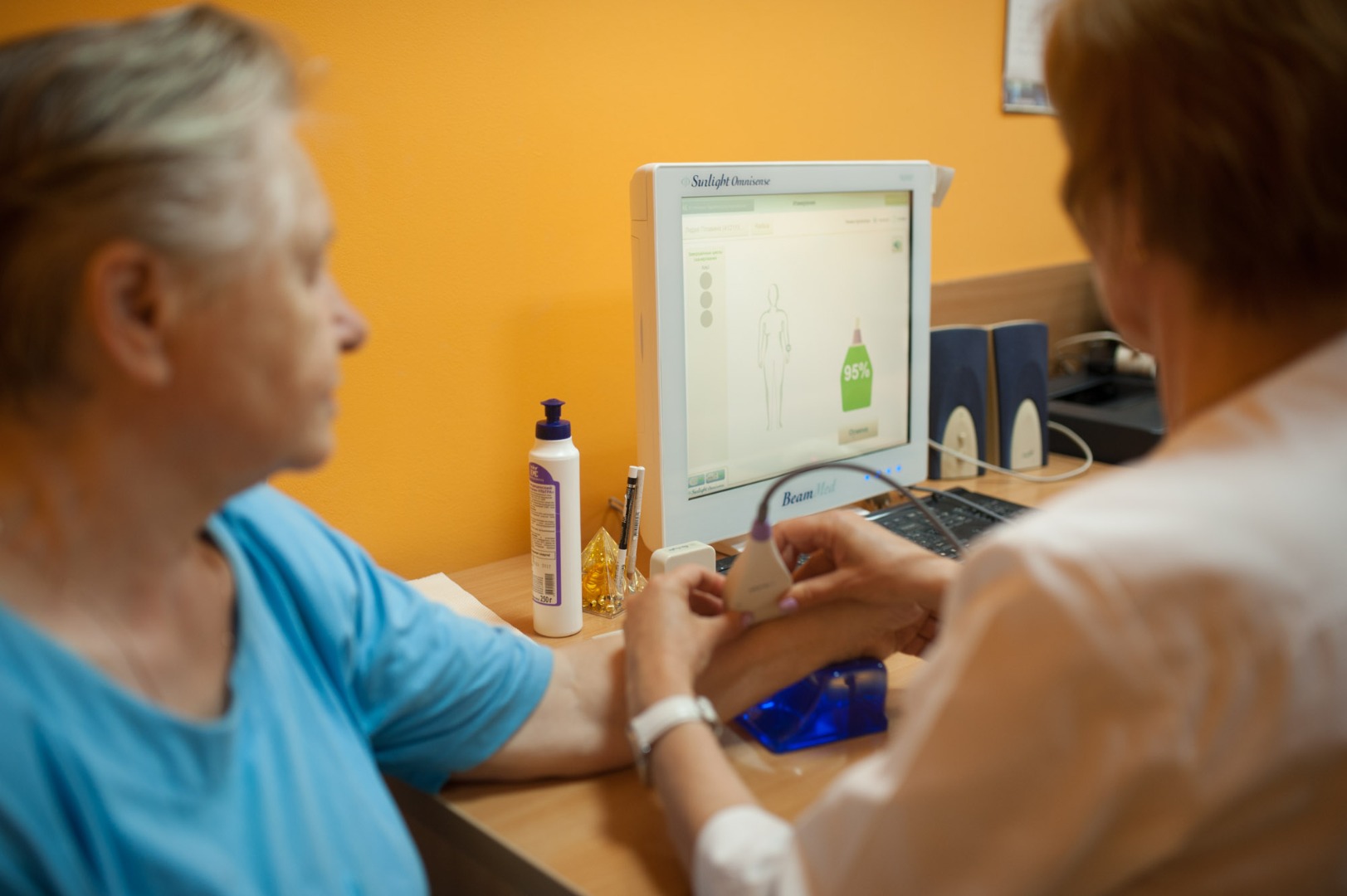A new diagnostic study in the sanatorium "Yaselda"! Densitometry: diagnosis of osteoporosis!
Densitometry (ultrasound) is a diagnostic method of determining the mineral density of bone tissue using ultrasound. The method is intended to diagnose the risk of fractures in adults. Using densitometry to diagnose normal mineral density of bone (low risk of fractures), decreased bone mineral density – osteopenia (fracture risk exists). At high risk of fractures diagnosed a sharp decrease in mineral density of bone tissue – osteoporosis. Osteoporosis is shown special treatment.
Densitometry is performed in the office № 207 (building 1, floor 2) according to the schedule. The appointment – 106 office (nurse's station) after submission of the bill for payment. To write an agreement from the physician or in the office No. 109 (a post of the doctor on duty). Special preparation for examinations is not required. The survey takes 15-20 minutes. Bone bone density by ultrasound densitometry is defined at the upper (rarely lower) limbs (on the radius at the bottom of the forearm). At the place of examination should be free of damage to the skin, swelling.
Indications for densitometry
-women older than 65 years;
-postmenopausal women with risk factors;
men over the age of 70 years;
-adults with frequent fractures or fractures with minimal trauma in anamnesis;
-when taking medications that affect bone metabolism;
for monitoring of treatment;
-implantation of hip and knee joint
Performs a survey of General practitioner of the 1st qualifying category Savchenko Larisa Ivanovna, and recommendations.
Telephone for information: 38-83-73, 38-81-31,38-83-0
Assessment of risk of developing osteoporosis.
Typical localizarAI osteoporotic fractures – spine, hip, distal forearm, proximal humerus. The high cost of treating osteoporosis and its complications is for doctors and patients challenging, as many patients with osteoporosis remain without diagnosis and treatment.
In the sanatorium "Yaselda" development of an integrated approach to diagnosis osteopenia and osteoporosis and is formed of a program for prevention and treatment of these conditions in the conditions of sanatorium.
Diagnosis of osteoporosis is based on measurement of minerals in bone tissue.
From January 2018 in the sanatorium "Yaselda" operates ultrasound densitometry Sunligh Omnisense 9000, Israel, the principle of operation is based on the well known law of physics on the passage of ultrasound through the bone.
The measurement is performed on the peripheral parts of the skeleton: the middle of the tibia and the diaphysis of the radius.
The norm accept the value of T-criterion from +2 to -1, -1 to -2.5 is osteopenia, and -2.5 and less is osteoporosis.
Recruitment of patients:
- patients for a long time complain of constant pain in different parts of the musculoskeletal system, the place of selection was observed and was treated with the diseases of musculoskeletal system;
- not previously treated for osteoporosis, drug treatment is not accepted;
- clarified receiving glucocorticosteroid therapy;
-clarification of the two (three) of fractures of different localization in adults.
All the surveyed persons with identified disabilities, selected a customized program of therapeutic procedures, which include:
- school of osteoporosis;
- exercise therapy, mechanotherapy, path, Nordic walking;
- recommendations for healthy eating (the presence in the diet of foods containing calcium, vitamin D3, protein less than 1G not 1 kg of body weight per day);
- on the testimony of drug treatment with prophylactic and therapeutic purposes (calcium, vitamin D3, bisphosphonates, calcitonin, etc.);
- physiotherapy (laser therapy, BIOPTRON therapy, UV irradiation, magnetotherapy, millimeter therapy, electrical stimulation, galvanogryazelechenie (electrophoresis of mud solution), the General and local peloid therapy (mud applications, local and General);
-balneotherapy (mineral, bishofite, turpentine baths).
Additional risk factors for osteoporotic fractures
Fatal:
• Fractures in the adult
• Fractures in first-degree relatives.
• The white race.
• Advanced age.
• The female gender.
• Dementia.
• Fragile addition
Disposable:
• Smoking.
• Weight less than 58 kg.
• Hypoestrogenia (menopause before 45 years, bilateral oophorectomy, amenorrhea lasting more than 1 year in premenopausal women).
• Hypogonadism in men andropause
• Insufficient calcium intake throughout life.
• The abuse of alcohol.
• Low vision with the proper correction.
• Frequent falling.
• Poor overall health




